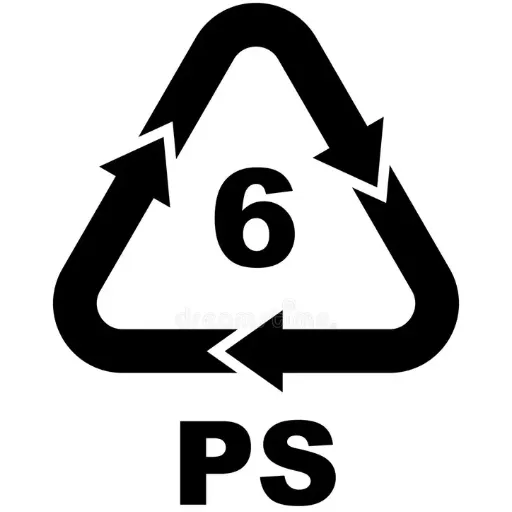Polypropylene (PP) plastic is one of the most commonly used plastics in the industry, found in food packaging and automobile parts. However, the rising environmental concerns have put the recyclability of PP plastic in the spotlight. How effective is PP plastic in terms of melting and reusing processes? Furthermore, how does recycling safeguard its quality and performance in subsequent uses? This guide reveals the technical and practical intricacies of recycling polypropylene, along with its unique features, hurdles to reuse, and advancements towards sustainable innovation.
What is Polypropylene and Why is it Important to Recycle?
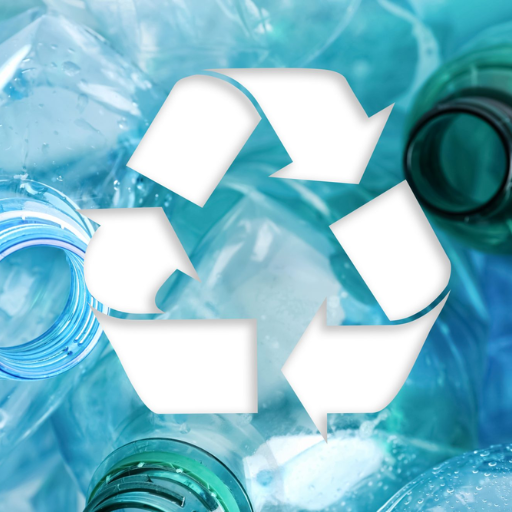
Sustainable management of waste plastics necessitates recycling. PP Plastic Polypropylene (PP) is an easy-to-process thermoplastic polymer that emits reasonable tensile strength, chemical resistance, and low density. Its widespread use cuts across food packaging, automobile parts, textiles, and medical devices. One has to recycle polypropylene to reduce plastic waste, save natural resources, and minimize the environmental impact of new plastics.
Understanding PP Plastic’s Properties
The unique combination of mechanical and chemical properties of Polypropylene (PP) enables its use in various applications. Polypropylene (PP) has a unique combination of mechanical and chemical characteristics that make it suitable for use in multiple industries. Polypropylene is known for its lightweight and strength. It’s used in the automobile and aerospace industries because it is easy to lift and supports robust tensile strength along with excellent impact insulation. The structure remains intact even as it bends.
Polypropylene is distinguished from other polymers by its chemical resistance to a wide range of chemicals, including acids, bases, and organic solvents. PP’s other polymer counterparts are useful for chemical piping and storage containers, in addition to polypropylene’s ease of handling in harsh environments. Its melting point is situated considerably around130-171 degrees Celsius. With such features, PP is rigid but also quite flexible when used in moderation. This makes plastic safe for water.
Why Recycling Polypropylene Matters
Modern industries, from manufacturing to healthcare, can use PP as a base material due to its various properties, especially when combined with advances in multi-state polymer engineering. Recycling of polypropylene is crucial, considering the polymer’s significance in the plastic industry and its environmental impact when not disposed of properly. Polypropylene contributes significantly to plastic production on a global scale, with millions of metric tons produced annually. If not recycled, polypropylene waste is usually sent to either landfills or the ocean, where it can take hundreds of years to decompose, pollute the environment, and damage ecosystems.
Not only does the recycling of polypropylene mitigate the previous thesis, but it also benefits the economy. Carbon emissions are mitigated because less energy is required to process recycled polypropylene than to produce virgin material. Using recycled polypropylene for industrial purposes also helps complete the loop and creates a circular plastic economy, reducing our reliance on fossil fuels. Industries are now using recycled polypropylene due to new advanced recycling methods, such as chemical recycling, which depolymerizes polypropylene, allowing for the recovery of better-quality materials.
Common Uses of Polypropylene Products
Due to its lightweight structure, durability, and high chemical resistance, Polypropylene (PP) is a polymer of importance to many industries. Perhaps the most pronounced use of polypropylene is in the food packaging industry, where it is used to manufacture food packaging containers and flexible packaging films. These products utilize Polypropylene’s moisture barrier properties, which deliver an extended shelf life and maintain product integrity.
Furthermore, it is widely used in the automotive industry for manufacturing bumpers, dashboards, and interior panels. The lightweight and durable nature of polypropylene contributes to fuel economy and overall vehicle performance. In addition, polypropylene serves as an insulator in appliances and is hence widely used in the manufacture of cables and electronic parts.
In healthcare, polypropylene is used to manufacture syringes, vials, and medical masks due to its sterility and low reactivity. Also, polypropylene in fiber form is incorporated into textiles used in carpets and upholstery as it is durable and resistant to stains. As can be seen, polypropylene is a valuable resource to many industries that require reduced costs while being practical and sustainable.
Can PP Plastic Be Recycled by Melted?
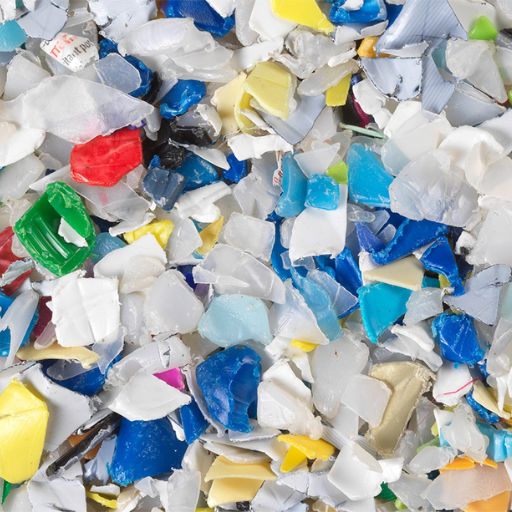
Certainly, PP polypropylene plastic can be melted for recycling purposes. This means the plastic is heated to the required temperature before being transformed into new plastic products. The best estimate is that this Temperature falls around 130-171°C (266-340°F). Energy consumption during this process is significant when reusing plastic products, especially in terms of the material purity and cleanliness of the product. Adequate cleaning helps sort the recycled plastic.
The Melting Point of Polypropylene
PP also has a distinct melting characteristic due to its unique crystalline structure, which extends from 130 to 171°C (266-340°F), depending on the molecular configuration. Factors like processing conditions, isotacticity, and even added components serve as a minor contribution to the melting point. The standard type of polypropylene is isotactic, which has a highly ordered structure, resulting in a higher melting point. Also, be mindful not to exceed the melting point, as doing so can weaken the material’s mechanical properties and negatively impact product quality.
How to Melt PP Plastic Safely
To safely melt polypropylene (PP) plastic, it is crucial to pay attention to the temperature details, as improper handling can worsen material degradation or create hazardous scenarios. The melting point of PP is around 320°F to 338°F (160°C to 170°C), and exceeding these limits can result in thermal degradation that decomposes polypropylene, emitting noxious fumes while weakening its structural integrity. Tools like extrusion machines or controlled ovens, which can provide and maintain consistent and accurate temperatures, are best suited for this purpose. Sturdy ventilation is necessary to carry away any potentially hazardous emissions produced during the melting process. Workers should equip themselves with protective gear such as heat-resistant gloves and safety goggles to protect themselves from burns and exposure. Also, risk supports polymer flow and helps ensure lower defect rates in the end product. In addition, relative temperature decreases over time, rather than sudden increases, which reduces stress on the system and ensures consistent polymer flow.
Challenges in Melting PP Plastic
The most challenging problem I encounter while melting PP plastic is ensuring the right amount of heating and temperature control. With a plastic’s upper temperature limit, it can undergo polymer degradation, which will impair the characteristics and quality of the final product. On the other hand, too little heat can prevent the melted material from flowing smoothly. Controlling ventilation during this step is a primary concern, as harmful fumes can build up due to inadequate ventilation. Moreover, the final product’s integrity might be compromised due to excessive internal stresses, so cautious heating rates must be employed.
What Are the Recycling Processes for Polypropylene?
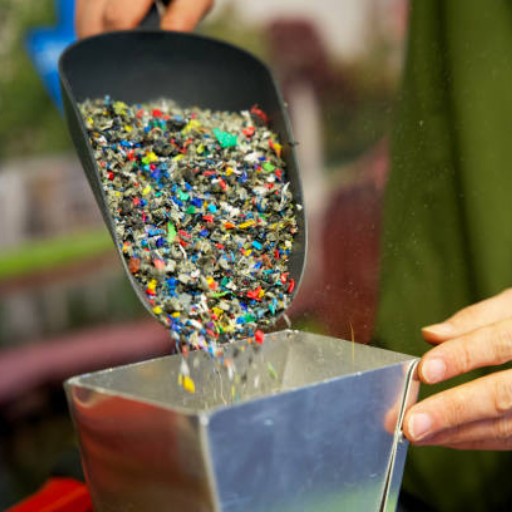
Standard polypropylene (PP) recycling involves several processes to ensure the material is appropriately reused. It starts with collection and sorting, where PP items are separated from other plastics to minimize contamination. The material is then cleaned to remove impurities such as food, grease, and other contaminating materials. PP is then shredded or ground to clean the plastic further, and the smaller pieces are easier to work with and undergo further processing. This PP plastic is then melted and shaped into pellets through a process called regranulation, and can then be used for other forms of manufacturing plastic products. This helps in achieving a circular lifecycle for polypropylene.
Mechanical Recycling of Polypropylene
The mechanical recycling of polypropylene has several advantages, which further strengthen the effectiveness of successful recycling and waste management systems. A consumption of material that is ‘virgin’ or unused is also a great benefit in lowering environmental damage related to resource extraction, along with the production of goods. In addition, mechanical recycling offers lower energy consumption compared to chemical recycling or producing new raw PP from fresh petrochemicals.
Even with these benefits, there are hurdles to overcome. One of the foremost complications is further quality loss of polypropylene in recycling attempts. This is commonly referred to as polymer chain scission. Such polymer degradation may diminish the mechanical strength and thermal resistance of the recycled polymer, making it inapplicable for demanding polymer applications. A further problem is contamination. Incompatible polymers, additives, or residues can affect the consistency and quality control of recycled polypropylene. To solve these problems, more effective sorting technologies and more reliable collection systems are being researched that focus on the precision and dependability of mechanical recycling.
Chemical Recycling of Polypropylene Explained
Polypropylene chemical recycling is considered the most innovative strategy for addressing the problems presented by mechanical recycling. Through chemical processes such as pyrolysis, gasification, and depolymerization, polypropylene is converted into its simpler monomers or other valuable hydrocarbons. This adds enormous value to the material over mechanical methods. These processes turn post-consumer waste into high-quality feedstock with no difference in quality from virgin materials.
Furthermore, catalytic innovations are improving the environmental and economic viability of chemical recycling by lowering energy requirements for catalytic recycling. The introduction of advanced zeolite and metal oxide catalysts, for example, enhances reaction rates while simultaneously decreasing the formation of unwanted byproducts. The chemical recycling process is especially beneficial for polymer streams that are too contaminated or degraded for mechanical sorting. Adopting these strategies at an industrial level could significantly reduce polypropylene waste while also supporting the global supply chain that relies on sustainable feedstock materials.
Sorting and Preparing PP Plastic for Recycling
Effective polypropylene (PP) plastic sorting and preparing operations are fundamental to the operational success of the recycling processes. Advanced automated sorting systems, for example, utilize near-infrared (NIR) spectroscopy and can effectively separate PP from waste streams containing a mix of different materials.
The process for treating PP starts with sorting, followed immediately by the washing step, which aims to clean contaminants such as dirt, labels, and glue. To enhance cleaning performance while minimizing water usage, high-efficiency washing machines with specialized detergents and mechanical wash action have been developed. Further preprocessing often involves reducing the plastic into shreds instead of granules, as this maximizes the surface area-to-volume ratio, which improves melting and chemical treatment processes.
How Can You Recycle PP Plastic at Home?
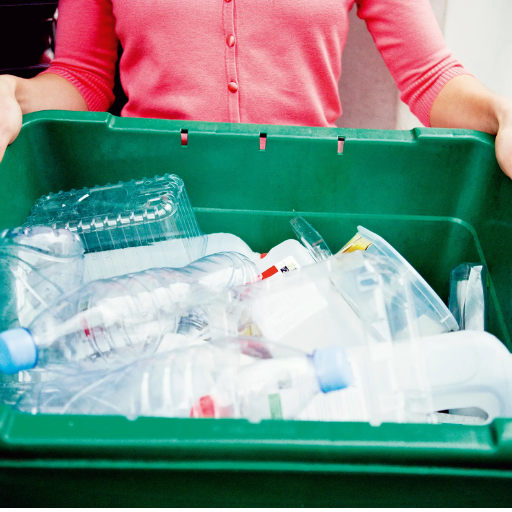
To recycle PP plastic at home, a few basic steps need to be taken to classify and process it correctly. First, identify polypropylene items by looking for the “5” resin identification code, typically located on the bottom of the containers. Next, wash the items to remove any potential food residue or contaminants, as these can disrupt the recycling process. Finally, confirm with your local recycling program to see if they accept PP plastic, as not all facilities do. If they do, place the clean, dry items into your recycling bin. For areas without PP recycling services, think of where to drop it off or look for more specialized programs that work with polypropylene.
Identifying Recyclable PP Plastic Items
With an extensive scope of application for Polypropylene (PP), it is essential to recognize items that are fit for recycling. Items such as yogurt cups, margarine tubs, and microwaveable deli trays are all food containers as well as standard recyclable PP plastic. Moreover, some PP straws, bottle caps, and packaging tape are also recyclable. As long as local programs exist, several industrial goods, such as automotive parts, reusable containers, and furniture, are also made of PP and are likely still recyclable. Look at the recycling triangle for the resin identification code “5”. This code will indicate that the item is made of PP plastic. Keep in mind that PP items with laminate coatings, excessive contamination, or a mix of materials may not be eligible for standard recycling.
Setting Up a Recycling Bin for PP Plastic
To strategically set up a polypropylene (PP) plastics recycling bin, procure a robust container that is distinguishable from other waste and recycling streams. Label the bin as “PP Plastic” or put “5” so people know what materials are appropriate for disposal. Ensure the bin is placed where it is easy to access and visible, such as near kitchens, offices, or communal areas where people typically throw away plastic bags.
Equally important is setting out what materials are acceptable and which are unacceptable. Add directions to rinse any food or chemical PP contaminants, such as residues, before placing them in the recycling bin, as they may hinder the recycling process. Use and maintain a list of yogurt containers, PP medicine bottles, and PP bottle caps as posters for identification to enhance compliance. Check and remove the bin regularly to discourage overflow.
Steps to Recycle PP Plastic Effectively
- Identify Recyclable PP Plastics
Polypropylene (PP) plastics are commonly found in products like food containers, straws, prescription bottles, and bottle caps. Ensure these items have the recycling symbol with the number “5” to confirm their material classification. Non-recyclable items, such as mixed-material products, should be excluded to avoid contamination.
- Clean and Prepare Plastics for Recycling
Residual food waste or liquids can compromise the integrity of recyclable PP plastics. Thoroughly rinse and dry each item to eliminate debris. Flatten or compress larger items, such as containers, to save space in recycling bins and improve collection efficiency.
- Segment and Sort by Composition
Sorting PP plastics separately ensures they are correctly processed. Use designated bins marked for polypropylene to distinguish them from other materials such as PET or HDPE, as commingled recycling streams often reduce overall recycling efficacy.
- Utilize Local Recycling Programs
Verify the guidelines and capabilities of your local recycling services regarding PP plastics. Some municipalities may accept PP through curbside collection programs, while others require drop-off at specialized facilities. Partnering with programs that support advanced recycling techniques, such as chemical recycling, can increase recovery rates for this material.
- Educate and Advocate for Proper Practices
Raise awareness of local recycling rules and encourage widespread participation to improve community adherence. Provide educational resources and conduct outreach initiatives to inform individuals about the recyclability and environmental benefits of PP plastics.
What Are the Benefits of Recycling PP Plastic?
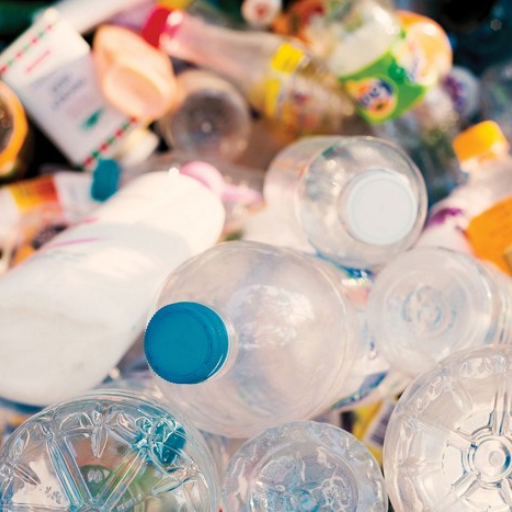
Recycling polypropylene (PP) plastic offers several benefits. It reduces the extraction of resources, such as oil and energy, needed to produce new plastic. Moreover, recycling plastic that is used to extract oil lowers the greenhouse gas emissions associated with making new plastic, thus reducing the overall harm to the environment. It also helps reduce waste, which extends the lifespan of landfills and diminishes pollution. When industries reuse PP plastic, they not only reduce the plastic waste in the environment but also have a cheaper way to make new products, which supports a circular economy with sustainable environmental benefits.
Reducing Plastic Waste in Landfills
Alleviating plastic waste in landfills is crucial to reducing unnecessary harm to the environment over time. Recent research indicates that plastic makes up around 12% of the world’s municipal solid waste, with polypropylene being one of the most common types of plastic. Plastic has a very long lifespan in landfills, sometimes taking hundreds of years, and releases toxic microplastics that can contaminate the soil and groundwater. Introduction of new waste management systems, such as improved recycling centers, advanced waste sorting technologies, and campaigns aimed at reducing plastic use, can significantly lower the amount of plastic waste sent to landfills. In addition, legislation that rewards companies for using sustainable packaging and reducing plastic waste will promote a more beneficial plastic waste management system.
Creating New Products from Recycled PP
Polypropylene (PP) is widely used for various purposes because it is one of the most recyclable plastics, meaning it can be reused repeatedly without altering its mechanical properties. For example, PP is used in the manufacturing of containers, automotive parts, textiles, and even industrial packaging. Recycled PP is now readily available and has better structural strength, making it a more eco-friendly option compared to virgin PP.
Recent innovations have made advancements in the ratio of clean and recycled polymer blends, thus achieving stronger standards for structural performance, durability, thermal resistance, and chemical stability. Additionally, lifecycle analysis reveals that recycled PP offers an environmental advantage, resulting in a 30% reduction in greenhouse gas emissions compared to using virgin PP. Supplying industries with recycled PP will enable them to minimize their expenses while supporting world sustainability goals.
Environmental Impact of Polypropylene Recycling
Reducing the environmental impact of plastic waste is greatly aided by recycling polypropylene (PP). Current research indicates an alarming increase in plastic production, exceeding 300 million tons per year, with PP constituting a large portion of this figure. In the absence of any recycling initiatives, PP waste is likely to accumulate in landfills and the natural environment, where it can take hundreds of years to decompose, generating greenhouse gas emissions and leaching harmful substances into the surrounding soil and water. Eventually, adopting advanced recycling technologies like chemical depolymerization, which transforms PP into its constituent parts, will reduce reliance on virgin materials and overall waste.
Recycling PP also has the advantage of significantly reducing energy demand. Preliminary studies estimate that energy usage during the production of recycled PP is 88% higher than if the PP were virgin. This not only helps conserve limited energy sources but also drastically reduces the operational carbon footprint. Industries are shifting towards strategies focused on PP recycling due to the adoption of sustainability targets by corporations, policy changes aimed at combating climate change, and goals set by governing bodies.
What Happens to Non-Recyclable PP Plastic?

Non-recyclable polypropylene (PP) plastic is often discarded into landfills, with an estimated lifespan of hundreds of years, which ultimately harms the environment. Some of it is incinerated, which reduces waste, but comes at the cost of greenhouse gas emissions and the release of toxic gases. Advanced methods, such as chemical recycling and energy recovery, are being developed to reduce the impact of non-recyclable PP plastic, but they are not yet available globally.
Understanding Contaminants in Recycling
Contaminants can significantly harm the efficiency and quality of recycling processes. The most common offenders are food scraps, misplaced non-recyclable and hazardous plastics, such as batteries, and electronic waste. These sorts of contaminants lower the quality of recyclable materials. For example, food-tainted cardboard or ‘greasy’ cardboard is moderately contaminated with food and cannot be turned into high-value recycled paper products.
Single-stream recycling systems increase convenience, but they come with higher contamination levels because of material mixing during collection. A recent research study found that single-stream recycling contamination rates can be as high as 25%, meaning that a quarter of the collected materials are no longer usable. These problems are being solved with efficient sorting technologies, like optical sorters and AI-based identification. Teaching the general public about correct recycling practices is equally important to reducing contamination and improving the efficiency of the entire recycling system.
The Fate of PP Plastic That Can’t Be Recycled
Polypropylene (PP) plastic is a common plastic grade because it is cheap, strong, flexible, and resistant to heat. Not every grade of PP plastic is efficiently recycled because of contamination, degradation, or a lack of recycling infrastructure in the area. Landfill-bound non-recyclable PP plastic can take hundreds of years to decompose. During this slow decomposition, landfilled plastic can leach microplastics, polluting soil and groundwater.
Another option for non-recyclable polypropylene (PP) is incineration, which is burning without recycling. While such an approach may decrease physical waste material, it can emit greenhouse gases and other harmful emissions unless modern waste-to-energy plants with high-tech burners are employed. Some companies are developing new solutions to deal with hard-to-recycle PP plastics by chemically reducing them and scavenging their basic monomers. This strategy can significantly reduce dependency on virgin material, but unsolved issues of industrial scale and economy still pose significant challenges.
Alternatives to Single-Use PP Products
For alternatives to Polypropylene single-use disposables, my focus is on integrating multifunctional approaches that help achieve sustainability goals. These can be reusable products derived from stainless steel, glass, or silicone, which are durable and eco-friendly. Furthermore, waste can be decreased by replacing plastic products such as polylactic acid (PLA), which are compostable and plant-based. When possible, I also support making behavior changes, such as carrying reusable containers instead of disposable ones, which reduces packaging waste during bulk purchases and decreases the need for packaging. These solutions together help slow environmental degradation while encouraging proactive sustainability efforts.
Reference Sources
1. A Comparative Bibliometric Analysis on Plastic Waste Recycling
- Key Findings: This study examines trends in plastic waste recycling, highlighting the role of circular economy models in promoting the reuse and recycling of plastics, including polypropylene (PP). It highlights the environmental benefits of reusing materials and the challenges of transitioning from a linear to a circular economy.
- Methodology: A bibliometric analysis was conducted using Scopus and Web of Science databases, analyzing over 2,000 articles published between 2014 and 2023. The study used tools like VOSviewer to map research trends and collaborations.
2. Thermal Degradation of Polypropylene Reprocessed in a Co-Rotating Twin-Screw Extruder
- Key Findings: This research examined the effects of multiple reprocessing cycles on PP. It found that reprocessing at higher temperatures (e.g., 280°C) led to significant thermal degradation, including an increase in melt flow index (MFI) and a reduction in molecular weight. The study developed a kinetic model to predict these changes, aiding in optimizing recycling processes.
- Methodology: Virgin PP was reprocessed up to five times at temperatures of 240°C, 260°C, and 280°C using a twin-screw extruder. The material’s properties were analyzed using FTIR spectroscopy, melt flow index testing, and gel permeation chromatography.
3.Top PP Plastic Pellets Suppliers in China
Frequently Asked Questions
Q: Can polypropylene plastic be melted and reused?
A: Yes, polypropylene plastic can be melted and reused through the plastic recycling process. This type of plastic is commonly used in various products, making it an essential material for recycling efforts.
Q: What are the benefits of recycling plastic, specifically polypropylene?
A: Recycling plastic, including polypropylene, helps reduce the amount of plastic waste in landfills. It also conserves resources by using recycled materials to make new products, thus minimizing the need for virgin plastic production.
Q: How is polypropylene plastic recycled?
A: The recycling process for polypropylene plastic involves collecting plastic products, sorting them, and then melting plastic down to create new plastic materials. These recycled materials can then be used to make new products, such as plastic bags and packaging.
Q: What types of plastic products can be made from recycled polypropylene?
A: Recycled polypropylene can be used to make various plastic products, including containers, automotive parts, and even fiber for carpets. It is versatile and can be used in many different applications.
Q: Are all plastic materials recyclable?
A: No, not all plastic materials are recyclable. Different types of plastic have different recycling processes, and some, such as single-use plastics, are not easily recyclable. It’s essential to check the recycling codes on plastic products to determine their recyclability.
Q: How does PP recycling contribute to waste management?
A: PP recycling plays a significant role in waste management by helping to reduce the overall amount of plastic waste. By recycling polypropylene and other plastics, we can divert tons of plastic from landfills and promote a more sustainable approach to plastic use.
Q: Can mixed plastics be recycled together?
A: Generally, mixed plastics cannot be recycled together effectively. Different plastics have different melting points and properties, which can complicate the recycling process. It’s vital to sort plastic materials before recycling to ensure they can be melted and reused properly.
Q: What happens to polypropylene bags when they are recycled?
A: When polypropylene bags are recycled, they are collected, sorted, and then processed to melt plastic down into pellets. These pellets can then be used to make new plastic products, thereby contributing to plastic recycling.
Q: How can individuals reduce the amount of plastic waste they generate?
A: Individuals can reduce plastic waste by choosing reusable products, recycling plastic materials responsibly, and being mindful of their use of single-use plastics. This helps to promote a more sustainable lifestyle.

